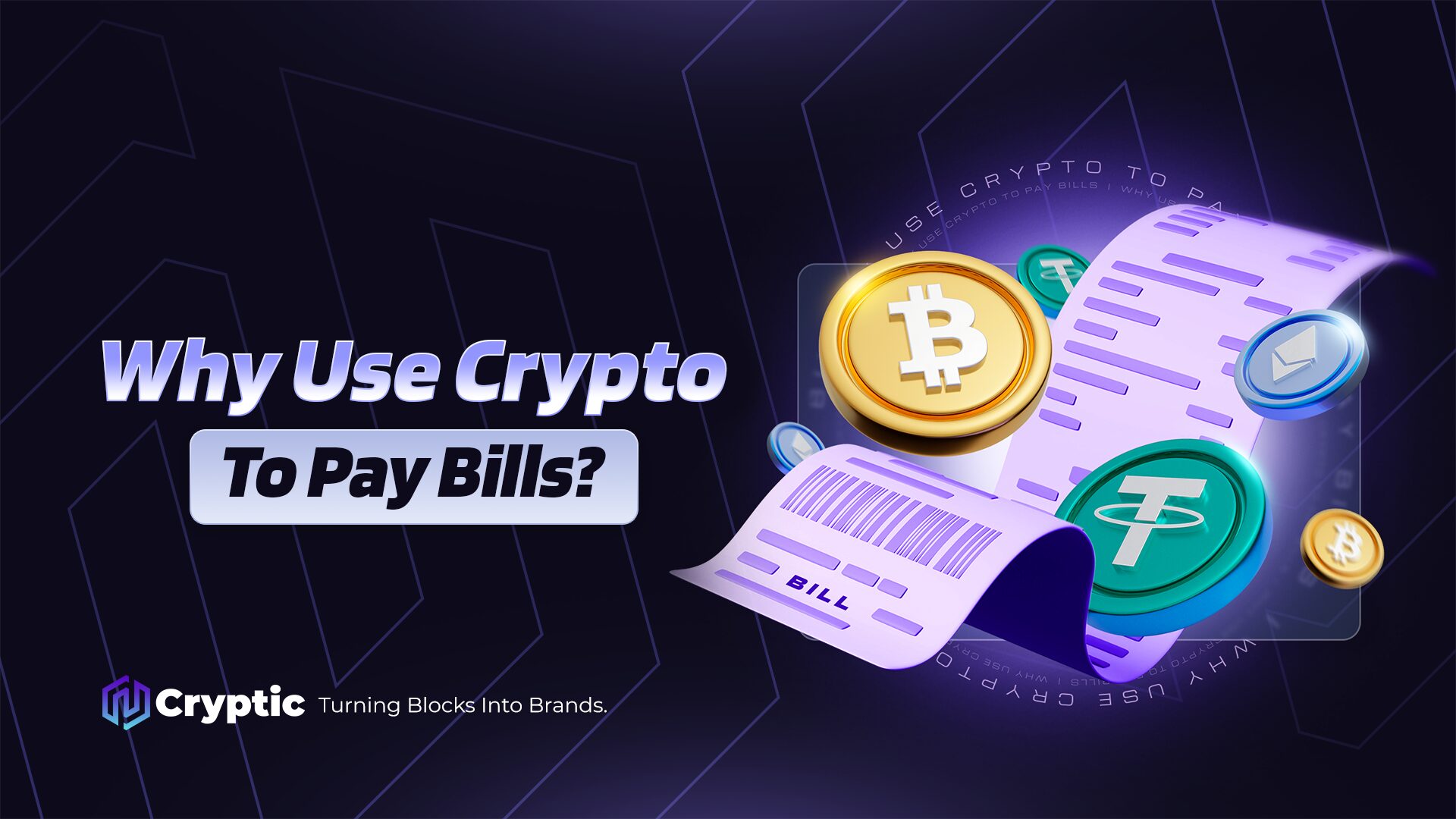Paying bills with cryptocurrency is already a reality in many parts of the world, providing a practical alternative for dealing with inflation, limited banking access and currency instability, all while offering more autonomy, speed and global reach than traditional systems

Crypto as Real-world Money
Cryptocurrencies have evolved far beyond speculation. Today, in many parts of the world, they’re becoming a practical financial tool, especially in regions facing inflation, limited banking access, or currency instability. Paying bills with crypto is no longer a distant idea. It’s happening now, from Latin America to Southeast Asia, and from Africa to Eastern Europe.
In places where the local currency loses value rapidly, stablecoins like USDT, USDC, or DAI offer a way to preserve purchasing power and make everyday payments with predictability. For others, it’s about inclusion. Millions of people are using crypto because they don’t have access to traditional banking but do have a smartphone and internet connection.
Crypto also offers a level of autonomy and speed that traditional systems often lack. There are no business hours, intermediaries, or borders, just your wallet and the network.
What can you pay with crypto today?
As crypto adoption expands, so does the list of services you can pay for with digital assets. In some cases, businesses accept crypto directly. In others, platforms and wallets convert crypto into local currency at the moment of payment, making the experience seamless.
Here’s what people around the world are already paying with crypto:
Utilities – In select regions, electricity, water and gas providers now accept crypto, either through direct partnerships or via third-party processors. This is especially common in areas where banking infrastructure is weak or inflation is high.
Phone and internet bills – Telecom companies and prepaid platforms in countries like Nigeria, Argentina, and India are increasingly allowing crypto top-ups for data and mobile plans.
Streaming and subscriptions – Services like Netflix, Spotify or Microsoft products can be paid indirectly using crypto through gift cards or subscription platforms that support digital assets.
Retail purchases – From e-commerce to in-store shopping, crypto payments are expanding. Some global retailers already accept it directly, while others can be accessed through crypto-linked debit cards or digital gift cards.
Transportation – Whether it’s fueling your car, renting one, or topping up a metro pass, several local and regional providers are experimenting with crypto-friendly options.
Gift cards – A popular global workaround: buy gift cards from major brands like Amazon, Uber, Apple, Airbnb and more using crypto, usable almost anywhere.
Rent, tuition, or taxes – In countries like Switzerland, El Salvador and the UAE, some government or public institutions now accept crypto for things like municipal taxes, public university tuition, or rent payments on state-managed properties.
Whether you’re in NY, Dubai or Berlin, more services are accepting crypto directly or via conversion tools. What was once a niche use case is now a growing alternative to fiat in the real economy.
Three main ways to pay your bills with crypto
While crypto is becoming more accepted globally, how you pay bills with it depends on where you live and what tools you have access to. In general, there are three main methods used by crypto holders worldwide:
1. Crypto cards (prepaid or debit-style)
These are physical or virtual cards offered by major crypto platforms like Crypto.com, Binance, BitPay, and Coinbase. They’re typically branded by Visa or Mastercard, and work much like traditional debit cards but instead of pulling funds from a bank account, they debit directly from your crypto balance or stablecoin holdings (e.g., USDT, USDC).
These cards are accepted at millions of merchants globally and can be used to pay for:
- Groceries
- Streaming services
- Gas
- Utilities
- Subscriptions
- Or any expense that accepts Visa or Mastercard.
Some cards also allow you to earn crypto rewards on your purchases, adding another layer of benefit to daily spending.
2. Bill payment platforms with crypto support
Several platforms now bridge the gap between crypto and traditional billing systems, especially in countries or regions where crypto adoption is growing fast. These services let you pay for utilities, mobile plans, rent, and more using crypto.
Some notable examples include:
BitPay Bill Pay (USA): Allows US users to pay mortgage, rent, credit cards, and utilities using crypto
CoinsPaid (Europe & Asia): Offers integration for business and consumer payments using crypto.
NOWPayments: Global payment platform supporting billers and merchants in accepting over 100 cryptocurrencies.
Pyypl (Middle East & Africa): A growing app offering bill payments, mobile top-ups, and more, funded by crypto balances.
These services often act as intermediaries, converting your crypto in real-time and delivering the fiat value to the service provider.
3. Convert to fiat and pay manually
In countries where crypto integration with billing systems is still limited, many users rely on a more manual approach: convert your crypto to fiat and then use your local bank or app to pay your bills.
Common platforms that allow quick and regulated conversions include:
Binance
Kraken
MoonPay
Ramp
Transak
This method requires a bit more effort but remains essential in markets where direct crypto payments are not yet widely accepted. It’s also the most flexible route if you need to send money to traditional institutions like landlords, banks, or government agencies.
Each method serves a different need. Some offer speed and convenience, others broader availability. But together, they form a growing ecosystem that connects the crypto economy to the real world.

Tips before using crypto for payments
Paying bills with crypto can offer flexibility and autonomy, but it also comes with important considerations. Before making crypto part of your daily financial routine, here are key tips to keep in mind:
Check fees and exchange rates
Transaction and conversion fees can vary significantly depending on the platform or service you’re using. Some crypto cards and payment gateways may charge:
flat service fees
percentage-based transaction fees
or offer less favorable exchange rates when converting to fiat
Compare platforms and always check the final amount you’ll be paying. Even small differences can add up over time, especially for recurring expenses.
Prefer stablecoins for predictable payments
If you’re paying bills that require predictable amounts, like rent, tuition, or utilities, using stablecoins (e.g., USDT, USDC, DAI) is often a smarter choice.
Unlike Bitcoin or Ethereum, stablecoins are pegged to fiat currencies, which reduces the risk of price swings between the time you send and the time the payment is settled. This makes stablecoins ideal for routine payments or budgeting with crypto.
Prioritize security
Crypto is decentralized, but with that freedom comes responsibility. To keep your assets safe:
use trusted wallets (hardware or secure mobile apps)
enable two-factor authentication (2FA) on all platforms
keep your private keys and seed phrases offline and secure
Security lapses can result in irreversible losses, so take every precaution seriously.
Understand local regulations
Crypto regulations vary widely by country. Some governments encourage crypto usage, others impose strict controls or tax obligations.
Before paying bills with crypto, make sure you:
know whether the transaction needs to be declared for tax purposes
understand if the biller accepts crypto directly or through a third party
check if your country has restrictions on crypto usage or withdrawals
Staying compliant not only protects you legally but also ensures the long-term sustainability of your crypto activity.
Paying with crypto is powerful, but being informed is essential. By understanding the tools, risks, and local context, you’ll be better equipped to use your digital assets with confidence and responsibility.
How this is changing the future of money
As cryptocurrencies evolve from speculative assets to tools for everyday transactions, we are witnessing a fundamental shift in how people interact with money.
From alternative to everyday
The growing use of crypto for daily expenses, whether through crypto cards, bill payment platforms, or stablecoin transfers, signals a movement toward a more accessible, digital-first financial system. What was once seen as a niche technology is becoming part of the financial routine for millions around the world.
This shift is especially visible in regions facing inflation, capital controls, or limited banking infrastructure, where crypto offers a faster, borderless alternative to traditional payments.
Global reactions: regulation and experimentation
Governments and institutions are closely monitoring these changes. In response, many are exploring:
CBDCs (Central Bank Digital Currencies), such as China’s e-CNY or the digital euro
Regulatory frameworks to balance innovation with consumer protection
Collaborations with fintechs to integrate crypto into formal systems
This reflects a growing recognition: digital assets are not a passing trend, they are influencing the very structure of the financial system.
Financial inclusion and the decentralized future
Perhaps most importantly, crypto payments offer a glimpse into a future where access to money isn’t limited by geography, intermediaries, or legacy systems.
For the unbanked and underbanked, estimated at over 1.4 billion people globally, crypto represents a new entry point to economic participation. Anyone with a smartphone and internet connection can store value, make payments, and interact globally without needing a traditional bank account.
As crypto becomes more usable in daily life, it pushes us closer to a decentralized, inclusive, and programmable financial future where individuals have more control, transparency, and flexibility over how they manage and move their money.
Ready to try it yourself?
Start small, top up your phone, subscribe to a streaming platform, or buy a gift card with crypto.The future of money isn’t a distant vision, it’s already happening, one transaction at a time.



